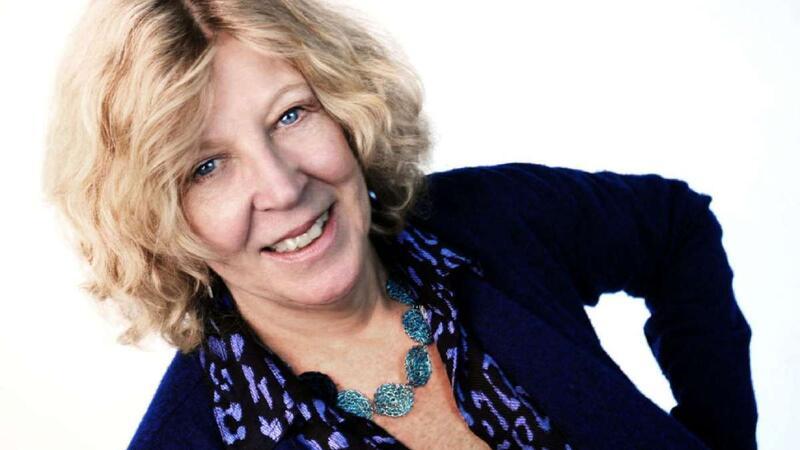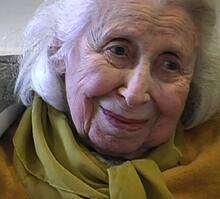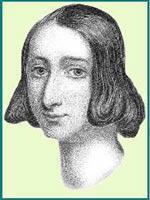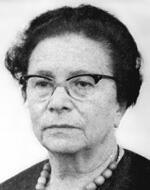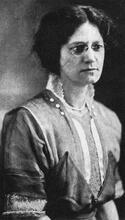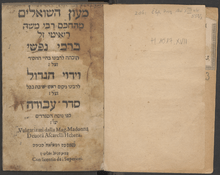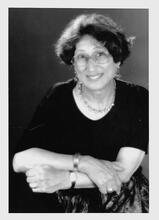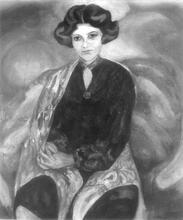Tamara Kamenszain
Tamara Kamenszain, born in 1947, was award-winning Argentine poet. She also published literary criticism, especially on avant-garde poetry from South America, led creative writing workshops, and taught literary analysis. In her broader-ranging essays, Kamenszain discussed the ways in which feminine qualities may be identified in literary language. She and her then husband, the novelist Héctor Libertella, were among the numerous Argentine intellectuals who took refuge in Mexico during the military régime of 1976-1983. Her collections of poetry tend to be highly unified, each treating a particular theme. El ghetto, her 2003 volume of poetry focused on mourning for a Jewish father and on Jewish languages, has especially attracted the attention of scholars of Jewish Latin American writing.
Life
The Argentine poet, journalist, and essayist Tamara Kamenszain was born on February 9, 1947, in Buenos Aires. In recalling her early influences, Kamenszain pointed especially to her grandfather, who enjoyed spinning tales adapted from the Hebrew Bible and the narrative passages of the Talmud; throughout this poet’s lengthy career, biblical stories and other traditional Jewish material continued to appear, here and there in her work, as sources and allusions.
Kamenszain studied philosophy at the Universidad de Buenos Aires before turning to journalism and editorial work. At various times, she edited the independent magazine 2001 and served as editor for the arts and culture sections of the Buenos Aires-based newspapers Clarín and La Opinión. As she gained recognition for her talent as a poet, she was increasingly in demand as a teacher of workshops in creative writing and began to give classes on a range of other literary topics as well. Kamenszain has been a visiting faculty member at the University of Chicago, among other institutions.
Kamenszain was married for some twenty years to the novelist and literature professor Héctor Libertella (1945-2006), a cult figure in Argentine literature, though the two divorced. Kamenszain and Libertella were among the many Argentine intellectuals who, during the repressive military dictatorship of 1976-1983, took refuge in Mexico, returning from exile in 1984. Kamenszain and Libertella had one son, Mauro Libertella (b. 1983 in Mexico City), who became a writer and cultural journalist in Buenos Aires.
Literary Career
Kamenszain’s collections of poetry and poetic prose, beginning with her 1973 De este lado del Mediterráneo (From this side of the Mediterranean), are regarded as significant contributions to Argentine literature. During the 1970s, she was at times grouped with such contemporaries as the poet and anthropologist Néstor Perlongher (1949-1992) in the somewhat vague category of “neo-baroque poets.” This characterization may be somewhat misleading in Kamenszain’s case, since her poetic language is often straightforward. In each of her volumes of poetry, the texts tend to cluster around a common theme, creating a unified effect. Although known primarily for her poetry, she also published collections of literary essays. In her literary criticism, she specialized in the study of poetry by avant-garde or highly experimental Spanish American writers. As her reputation began to spread internationally, her work was translated into English, German, Portuguese, and Italian.
Over the course of her lengthy career, Kamenszain won many awards, including some highly competitive international prizes. She was the recipient of a John Simon Guggenheim Award for Poetry covering the year 1988-1989. In 2004, the Medal of Honor for the Centennial of Pablo Neruda was conferred on her by the Office of the President of Chile. The Casa de las Américas in Cuba awarded Kamenszain the Honorary José Lezama Lima Prize in 2015. She was twice the recipient of the annual Konex Prize for poetry.
Poetry and Essays
Kamenszain’s writing is of particular interest to feminist critics and her more Jewish-themed works attract scholars of Latin American Jewish writing. De este lado del Mediterráneo is especially notable for its transformed versions of biblical narratives. Kamenszain accords exceptional prominence to the women protagonists of well-known biblical narratives and commingles their stories with those of other feminine entities, who may be read as goddesses or female divine forces.
In some of her essays, Kamenszain explored the ways in which femininity and Jewishness manifest themselves in writing. Her 1983 collection of literary criticism, El texto silencioso: tradición y vanguardia en la poesía sudamericana (The silent text: tradition and avant-garde in South American poetry), is mostly composed of analyses of specific poets’ work but contains two appendices in which the author takes a more theoretical approach. Kamenszain had been following the debate over “feminine writing,” a concept first theorized by French women intellectuals in the 1970s. Conceptualized in various ways, feminine writing was seen as a fluid, antihierarchical form of expression possessing liberatory potential. Rather than adhere to the thought of any one theorist involved in this debate, Kamenszain offered her individual take on the issues involved. In her essay “Bordado y costura del texto” (Embroidery and sewing of the text), she developed an analogy between the writing of literary texts and the needlework often regarded as women’s work. Here she advanced the bold assertion that a literary text that has been sewn with attentive care possesses an inherently feminine quality, regardless of the gender of its biographical author. “El círculo de tiza del Talmud” (The Talmudic chalk circle) traces parallels between biblical hermeneutics and the revisionist psychoanalytic thought of Jacques Lacan. Kamenszain revisited the concept of a feminine writing independent of the gender of the author, as well as a Jewishness inherent in texts, in a very short essay that she published in 1986, “Toda escritura es femenina y judía” (All writing is feminine and Jewish).
The publication of Kamenszain’s 2003 El ghetto, the most Jewish-themed of the poet’s volumes to date, aroused considerable interest among students of Latin American Jewish literature. The point of departure of this unified set of poems is the death and burial of a Jewish father, along with the grief, memories, and conflicted feelings experienced by the bereaved speaker. An English version, The Ghetto, appeared in 2011 in Seth Michelson’s translation, edited by Pedro Cuperman. In the course of the volume, terms and concepts commonly used in the discussion of Jewish history, such as “exile” and “ghetto,” are subjected to a searching examination, as are the perhaps more universal “memory” and “forgetting.” “Ghetto,” in particular, shifts among a number of figurative meanings. A ghetto in some respects appears as a restrictive entity from which one would want to break free. At the same time “ghetto” is inextricable from the figure of the recently deceased father, so that the speaker expresses ambivalent and complicated feelings toward it. The original texts of El ghetto are in Spanish, but the work contains many lexical reminders of the presence in Jewish life of Yiddish, Hebrew, and, in the case of the often-cited poem “Kaddish,” Aramaic.
In 2010, Kamenszain published El eco de mi madre (The echo of my mother). Another volume notable for its painful subject matter, it focuses on the cognitive decline of a woman with Alzheimer’s from the perspective of her daughter, as well as the shifting relationship between the two as the mother’s deterioration pushes her daughter into the position of parent. In 2012, Kamenszain published all her poetry collections to date in a single volume under the title La novela de la poesía: poesía reunida (The novel of poetry: collected poetry). A longtime analysand, Kamenszain published in 2015 El libro de los divanes (The book of couches), whose title alludes to the psychoanalytic treatment that serves as its subject matter. This volume brought back the light-hearted touches that had been difficult to find in some of the poet’s recent work in which decline, death, and grief had been prominent themes.
Principal Themes
Several thematic strands especially stand out in Kamenszain’s oeuvre. From her earliest work she gravitated toward portraying female figures, whether heroines of Biblical narratives, goddesses, or archetypal entities like the Great Mother. She specialized in creating speaking subjects who are recognizably female. As befitting a poet who was also a student of poetry, Kamenszain in many cases offered, via her creative texts, reflections on the nature and function of poetic language. As the poet moved through the decades of life, mourning and loss appeared as themes in her work. In El ghetto, memory and exile predominate. Her 2018 El libro de Tamar offers a retrospective rumination on her highly literary relationship with her late former husband.
Over the decades, Kamenszain remained dedicated to poetry and the analysis of poetry, only on occasion creating poetic prose. While she always drew upon her life experiences, the autobiographical current in her work grew more easily recognizable over time, drawing readers into the author’s intimate sphere.
Selected Works by Tamara Kamenszain
El libro de los divanes. Buenos Aires: Adriana Hidalgo, 2015.
La novela de la poesía: poesía reunida. Buenos Aires: Adriana Hidalgo Editora, 2012. Contains Kamenszain’s volumes of poetry through 2012.
The Ghetto. Translated by Seth Michelson. Edited by Pedro Cuperman. Syracuse, NY: Point of Contact, 2011.
“Toda escritura es femenina y judía.” In Pluralismo e identidad: lo judío en la literatura latinoamericana. Edited by Jaime Barylko, 129-32. Buenos Aires: Milá, 1986.
El texto silencioso: tradición y vanguardia en la poesía sudamericana. Mexico City: Universidad Nacional Autónoma de México, Coordinación de Humanidades, 1983. Literary and cultural essays.
Bollig, Ben. “Recent English Translations of Poetry from Argentina: Contexts and Strategies.” Translation & Literature 25, no. 1 (Spring 2016): 107-130.
Huberman, Ariana. “Memoria, judeidad y extranjería en Tamara Kamenszain. Hispamérica: Revista de Literatura 34, no. 102 (2005): 107-113.
Kanzapolsky, Adriana. “¿Por la boca del padre? Tamara Kamenszain y las lenguas del Judaísmo.” Cuadernos LIRICO, no. 19 (2018).
http://journals.openedition.org/lirico/6700 DOI: 10.4000/Lirico.6700
Lindstrom, Naomi. "Female Divinities and Story-Telling in the Work of Tamara Kamenszain." Studies in Twentieth Century Literature 20, no. 1 (Winter 1996): 221-233.
Sauter, Silvia, and Mariana Petrea. “Kamenszain, Tamara.” In Jewish Writers of Latin America: A Dictionary, edited by Darrell B. Lockhart, 284-290. New York: Garland, 1997.
Siganevich, Paula. “Tamara Kamenszain, poeta y testigo.” In Memoria y representación: configuraciones culturales y literarias en el imaginario judío latinoamericano, edited by Ariana Huberman and Alejandro Meter, 163-74. Rosario, Argentina: Beatriz Viterbo, 2006.

